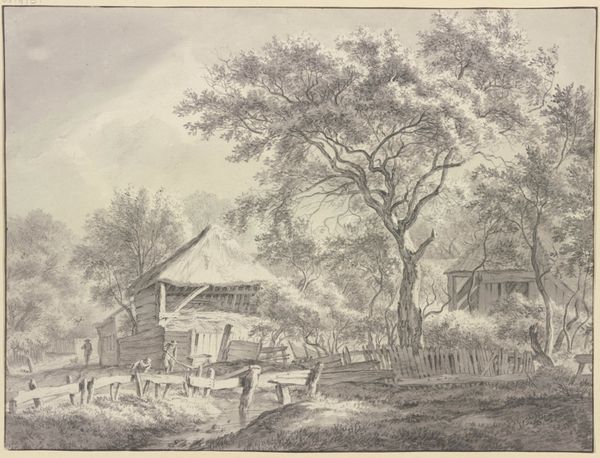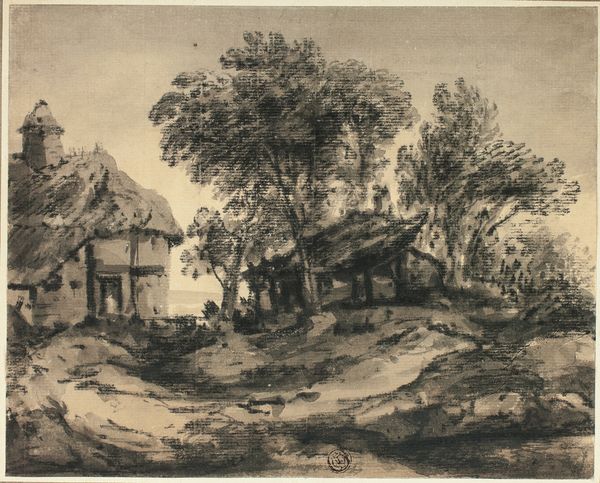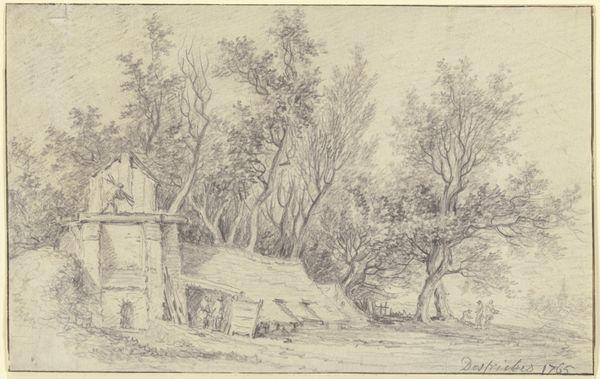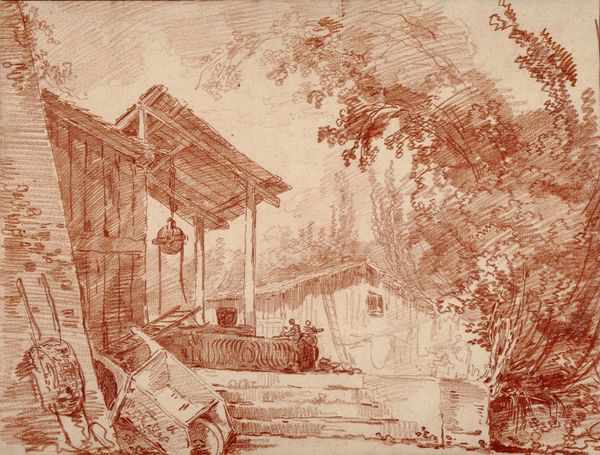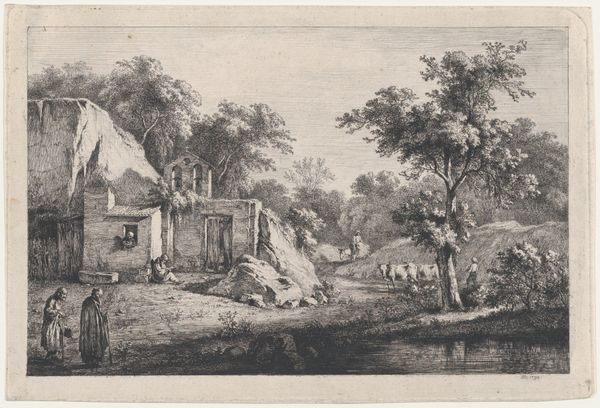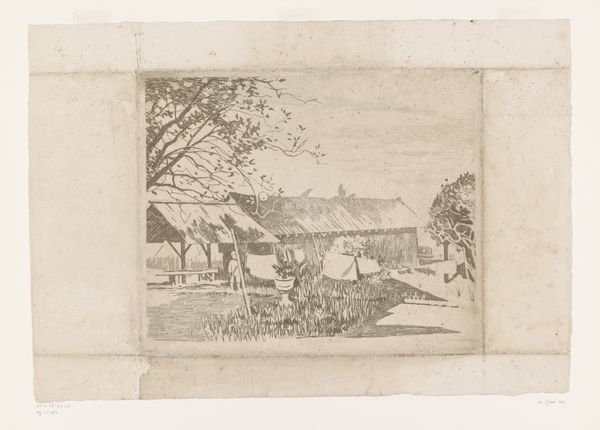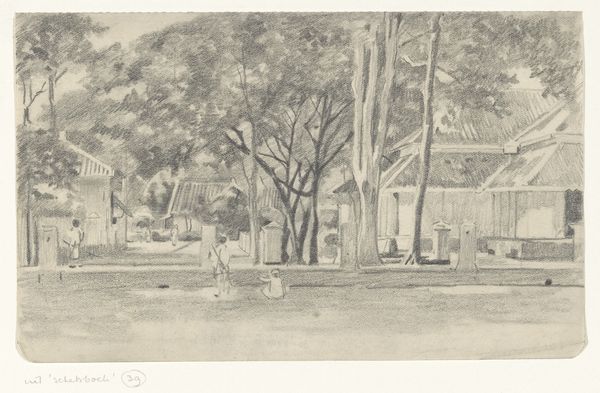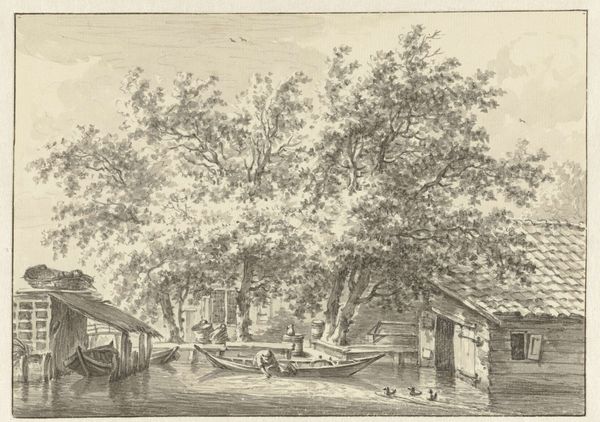
drawing, pencil
#
drawing
#
pencil sketch
#
landscape
#
pencil
#
cityscape
#
genre-painting
#
academic-art
#
realism
Dimensions: 225 mm (height) x 375 mm (width) (bladmaal)
Editor: Here we have "Landsbygade i sol," or "Village Street in Sunlight," a pencil drawing by Hans Smidth from 1900. It’s a pretty detailed sketch of a rural street. The sunlight almost feels like a character itself. How do you interpret the symbolism in such a seemingly simple scene? Curator: It appears unassuming, but observe how the sunlight is rendered. It illuminates not just the scene but a moment in time, etching it into the collective memory. The thatched roofs aren't merely architectural details; they speak to tradition, a connection to ancestral building practices. The figures in the background are generalized; we're meant to project ourselves into the scene, perhaps? What figures populate your imagination as you look at the artwork? Editor: That's interesting. I suppose I think of villagers going about their day. I hadn't considered my own projection into the sketch. Is that sense of projecting into an idealized past common in similar works? Curator: It's not unusual, especially during a period when industrialization was rapidly transforming society. Genre paintings like these offered viewers an escape, a nostalgic glimpse into a perceived simpler way of life, almost an Eden. Consider the chickens in the foreground: what emotions might they stir in a viewer? Editor: They seem to bring life and energy to the image. Thinking about it now, that old way of life wasn't all idyllic and perfect. Curator: Precisely. But this sun-drenched snapshot offers something enduring: continuity. Smidth masterfully invites us to reconcile an idealized past with our complex present, through everyday images that echo in our shared cultural consciousness. Editor: Thank you. I've definitely learned to look deeper for the cultural memory hidden in plain sight.
Comments
No comments
Be the first to comment and join the conversation on the ultimate creative platform.
